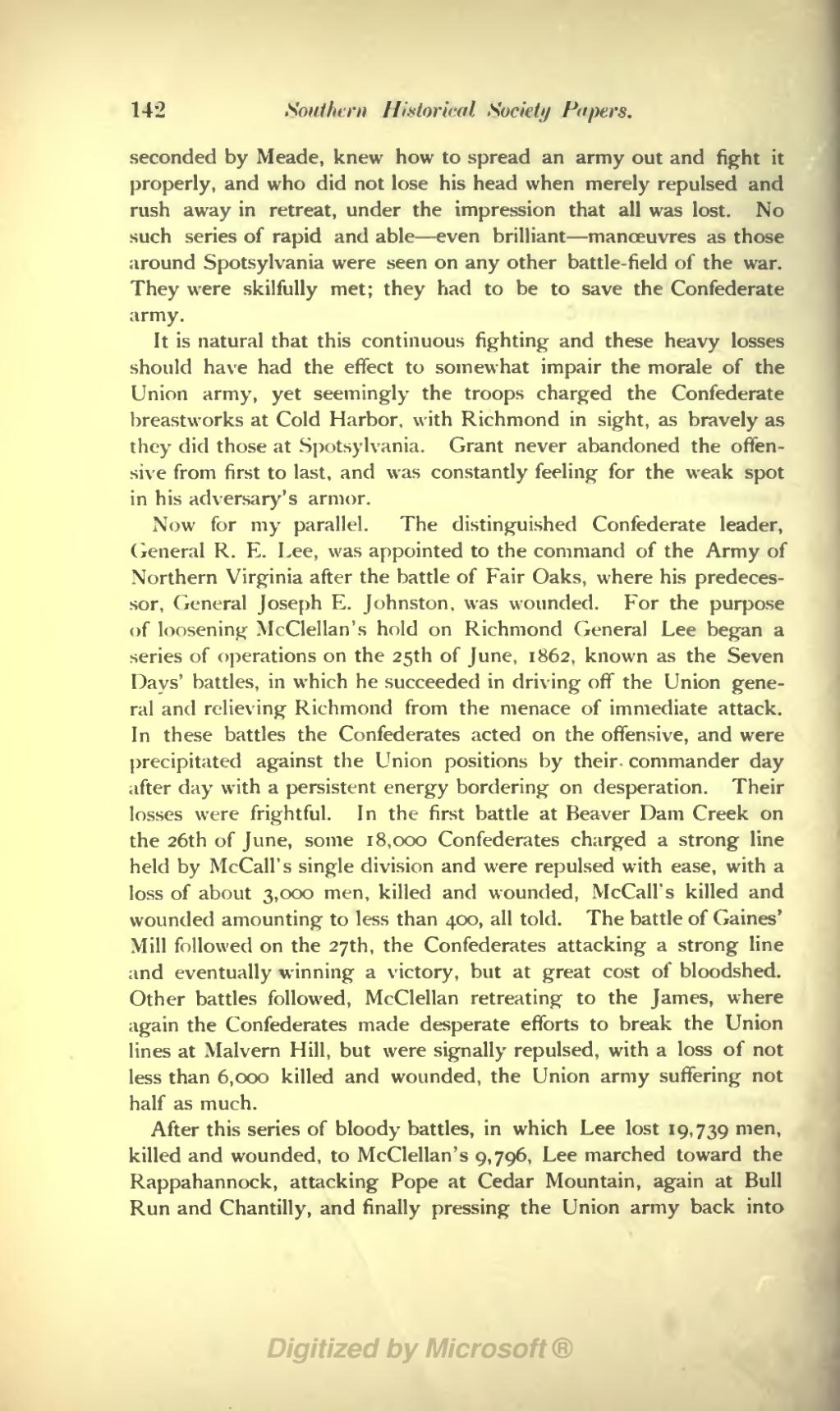142 Soi/f/n /// H'lttnr'inil Sot-i, i<i I'tt/x rt.
seconded by Meade, knew how to spread an army out and fight it properly, and who did not lose his head when merely repulsed and rush away in retreat, under the impression that all was lost. No such series of rapid and able even brilliant manoeuvres as those around Spotsylvania were seen on any other battle-field of the war. They were skilfully met; they had to be to save the Confederate army.
It is natural that this continuous fighting and these heavy losses should have had the effect to somewhat impair the morale of the Union army, yet seemingly the troops charged the Confederate breastworks at Cold Harbor, with Richmond in sight, as bravely as they did those at Spotsylvania. Grant never abandoned the offen- sive from first to last, and was constantly feeling for the weak spot in his adversary's armor.
Now for my parallel. The distinguished Confederate leader, General R. E. Lee, was appointed to the command of the Army of Northern Virginia after the battle of Fair Oaks, where his predeces- sor, General Joseph E. Johnston, was wounded. For the purpose of loosening McClellan's hold on Richmond General Lee began a series of operations on the 25th of June, 1862, known as the Seven Days' battles, in which he succeeded in driving off the Union gene- ral and relieving Richmond from the menace of immediate attack. In these battles the Confederates acted on the offensive, and were precipitated against the Union positions by their, commander day after day with a persistent energy bordering on desperation. Their losses were frightful. In the first battle at Beaver Dam Creek on the 26th of June, some 18,000 Confederates charged a strong line held by McCall's single division and were repulsed with ease, with a loss of about 3,000 men, killed and wounded, McCall's killed and wounded amounting to less than 400, all told. The battle of Games' Mill followed on the 2yth, the Confederates attacking a strong line and eventually winning a victory, but at great cost of bloodshed. Other battles followed, McClellan retreating to the James, where again the Confederates made desperate efforts to break the Union lines at Malvern Hill, but were signally repulsed, with a loss of not less than 6,000 killed and wounded, the Union army suffering not half as much.
After this series of bloody battles, in which Lee lost 19,739 nien, killed and wounded, to McClellan's 9,796, Lee marched toward the Rappahannock, attacking Pope at Cedar Mountain, again at Bull Run and Chantilly, and finally pressing the Union army back into
